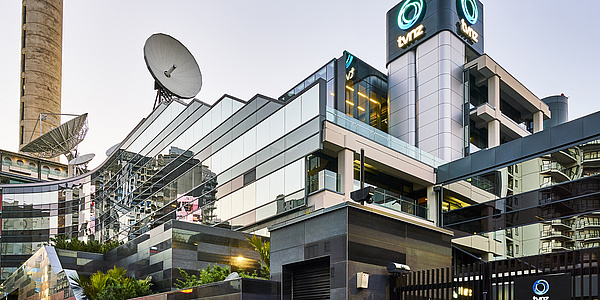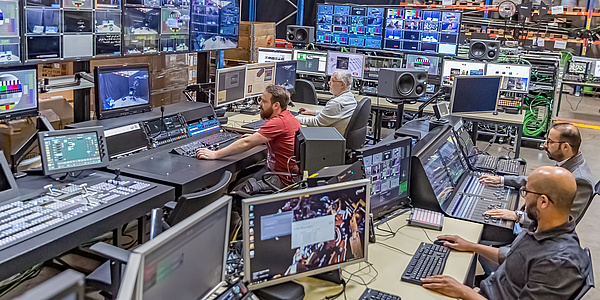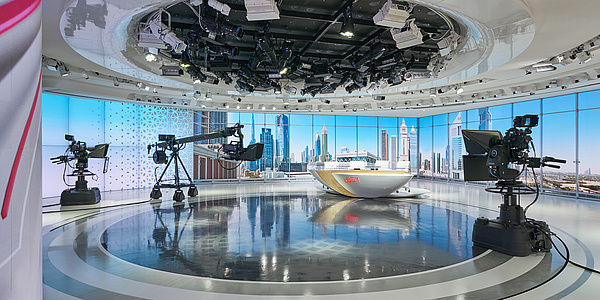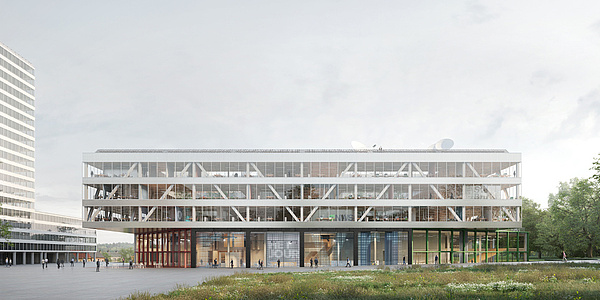
More than newsworthy: the newsroom transformation



From one-way street to cross-media hub
The media landscape today is characterized by rapid change. While it used to be newspapers, radio and television stations that played the most relevant role in media use, today entirely new media are transforming the market. Social media platforms such as Instagram and TikTok are becoming increasingly relevant - including in the area of reporting. That’s because this is where users can exchange and discuss topics.
Parallel to this, the media are also transforming in terms of their “technical hardware”. The opportunities and potential that this opens up for established media companies with a phased transformation of their newsroom are outlined below.
More than newsworthy: the newsroom transformation
With the advent of the mass availability of smartphones, the boundaries of media channels are no longer distinct: A device can deliver image, video, sound and text in equal measure and thus display all media formats. The multitude of platforms poses a new challenge for established media companies, as there is an increasing number of “touchpoints” that need to be covered with individually tailored content. News stories in particular tend to be universally relevant and take place on all channels - whether TV, radio or online platforms. So they are wherever recipients are - throughout the day and on a wide variety of platforms.

The great potential for content producers to accompany recipients throughout the course of the day at the various touchpoints brings equally great challenges: Each medium and platform has its own requirements and quality criteria for content published on them. New ways of cross-media production have to be tested and optimized from an operational and technical point of view. However, this should be preceded by a transparent debate with all relevant colleagues regarding working culture: do previously separate departments - such as TV, radio, and digital - actually want to work together? Do they see the added value or do they feel they could lose or be saddled with additional responsibilities and accountabilities? Such a transformation process has a direct impact on the corporate culture. So without people, such a technology process is not possible.
Reporting in the Internet cosmos
The transformation of the media has also changed the news landscape enormously. Real-time communication leads to round-the-clock reporting; news must be available and up-to-date at all times. Today, the Internet and its use on mobile devices make it possible to get news out into the world immediately and sometimes even in real time. In a world of push notifications and live reporting, every second counts for the news broadcaster because the competition to be the first to report is fierce. This presents established mass media with the difficulty of defending their position in the changing media cosmos. On the other hand, established media companies in particular have some invaluable advantages over the new competitors: For example, they have their reputation, their “brand”, which they have usually been able to build up over decades. They stand for serious journalism and have the trust of many generations - all of whom are now skilled in the use of digital media and devices. This is precisely where a clear competitive advantage lies in this day and age, when news media are confronted with accusations such as “fake news”. One of the major challenges, but also one of the most important steps, is to transfer these established “brands” into the complex world of online media and media convergence.
New challenges for media companies
How are media companies dealing with this challenge? How does a classic “one-way newsroom” become one that plays the entire new communications keyboard? One of the most important components of a newsroom is the newsroom itself. It is often the heart of a media house, as it is here that information is aggregated, curated, and processed. But it is precisely these newsrooms that need to be upgraded to meet the new, cross-media demands. For example, making an already broadcast radio report available online as a podcast at the same time sounds simple, but it is usually a challenge for two reasons:











